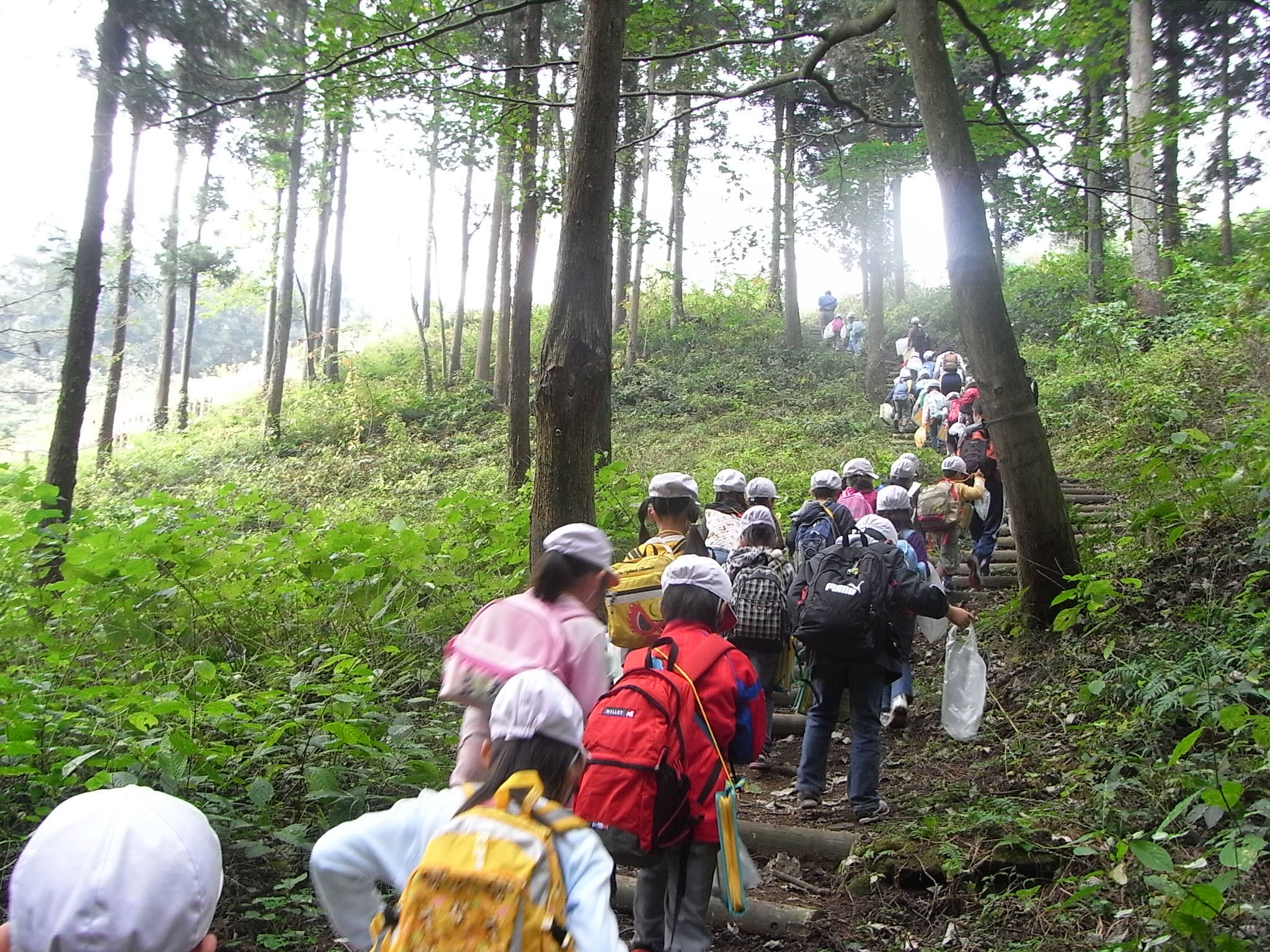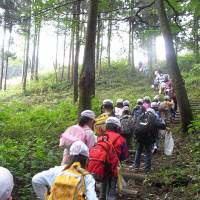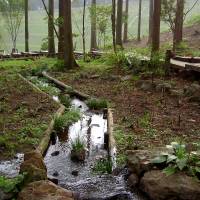It was about 15 years ago when an old friend, Yoshito Umezaki, invited me to dinner in Tokyo to meet a friend of his named Masayoshi "Mike" Ushikubo — "a really great guy who loves mountains, travels all over the world and is a company president who has a little problem."
I am always happy to meet friends of friends, especially if they like mountains.
It was a very pleasurable, convivial evening, during which I learned that the "little problem" in question stemmed from the heady years of Japan's bubble economy in the late 1980s, when Mr. Ushikubo's company — now known as Sanden Corp. — bought a large tract of land in Nukagawa village, at the foot of 1,828-meter Mount Akagi in Gunma Prefecture. The intention had been to make a golf course there, but the local people were adamantly opposed to that and protested strongly.
In addition, Mike's father, Kaihei Ushikubo, who founded the company in 1943, had put his foot down and said that not a single tree on that land was to be cut down. No golf course!
By the time of that dinner in Tokyo, however, the need had arisen for the company to build a new factory, and I was asked to take a look at the land and tell Mike what I thought about its suitability as a site.
To clear the air from the start, I said there and then that, though I am a naturalist, I am not single-mindedly opposed to industrial development or factories — after all, people need jobs. I stressed, however, that I was strongly against any development that destroyed the environment.
In addition, I explained that I would not treat this request as a consultant, but as a friend: I'd take a look and give an opinion, but would not accept any money for doing so.
It was a very large tract of land, about 30 times the area of Tokyo Dome. Some of it was planted with crowded, spindly cedars, though even more was planted with mulberry trees, the leaves of which were formerly used for feeding silkworms. There were lots of derelict chicken sheds and abandoned fields that had gone to weed. There was also illegally dumped garbage — from old washing machines to porno videos — strewn all over the place and clogging up the streams. Local protesters had also tied red tape around the trees as a sign that they should not be cut.
After spending most of the day looking all over the land, Mike took me to see his father, a dignified old gent whose word was law. Mike asked me to tell his father face-to-face what I thought.
"Well sir," I said, "those trees need thinning, so a lot should be felled. It would be better for the environment if original species were replanted to make a mixed forest that can grow better timber and improve the area for wildlife."
To Mike I said that if he cleared away the garbage and the derelict sheds, improved the streams by removing garbage and old concrete, and built a factory that would emit no pollution, then I saw no reason not to use the area — as long as the locals understood.
I also recommended he consult Shubun Fukutome, the Kochi, Shikoku-based president of the West Japan Scientific Research Co. Ltd., who is Japan's leading expert on close-to-nature construction methods.
And I invited Mike to come and see our woods here in Kurohime in the Nagano Prefecture hills, and a month or so later he and several of his associates visited and were most impressed.
Soon after that, I was invited back to Gunma Prefecture and out of the blue found myself in a civic hall facing about 100 people representing groups that had opposed the golf course.
With Mike beside me I stood up and gave my opinions, then asked them whether, if the company improved the land for wildlife, emitted no pollution, planted and nurtured mixed woodland, created better water habitats — while at the same time providing hundreds of new jobs — they would still object.
I also asked whether — if the president here and now promised to do all that — they could agree.
Mike stood and shook hands with me in front of everybody and said he would promise to commit himself to all of my suggestions. From that day on there has been no local opposition.
On May 30, 2002 — the same year that our Afan Woodland became a trust — the Sanden Corp. Akagi Industrial Plant and the Sanden Forest were opened. Half of the land was occupied by factory buildings, roads and parking lots, while the other half had been planted with 40 species of trees totaling some 30,000 specimens. Ponds and streams had also been created, including a lovely little pond ringed with iris and reeds whose water was purified runoff from the factory.
In addition, as 2002 marked the centenary of the Anglo-Japanese Alliance, and as Sanden Corp. has factories and outlets in Britain (as well as in 22 other countries worldwide), I and a secretary from the British Embassy in Tokyo planted an English oak at the main entrance of the factory.
Sanden Corp., which employs more than 10,000 people, produces coolers for motor vehicles, vending machines, carbon-dioxide heat pumps, remote monitoring systems and non-Freon (chlorofluorocarbon-free) display cases. Since the Akagi factory opened, the workforce has almost doubled, its stocks and bonds have gone up and it has won environmental and other prizes in Japan and around the world.
Besides all that, the Akagi factory and forest — and an environmental center built on the site — also attracts some 15,000 visitors a year. Meanwhile, deer, wild boar, Japanese tanuki (raccoon dogs), foxes, badgers, hares, civet cats, squirrels, flying squirrels, weasels and martens now make the forest their home along with all kinds of birds, from hawks and owls to swallows, herons and ducks.
Along with that veritable wildlife menagerie, the site — including the Sanden Forest — hosts rare orchids, as well as endangered species of butterflies and wild silk moths, while the ponds and streams are home to dragonflies, frogs, newts and salamanders.
Nowadays, schools and environmental groups in the area use the forest for fieldwork studies, and local history is also carefully researched. As a result, the land has already revealed sites dating back to the neolithic Jomon Period that spanned millennia from around 10,500 B.C. to 300 B.C., and the succeeding iron-age Yayoi Period, which lasted until around A.D. 300. Excavations at some of these sites have yielded pottery, obsidian and flint blades, arrowheads, axes and other artifacts, as well as very old iron-smelting kilns.
Ever since the days of that pivotal civic-hall meeting, there's been a great friendship and close contact between all those involved in Gunma and our Afan Woodland Trust. Last month, in fact, all our trust members, both field and office staff, were invited by Sanden Corp. to walk through and inspect their forest, which is growing magnificently and improving year by year. Afterward, we enjoyed meals together and held detailed discussions on how we can continue to cooperate with each other. And as young Old Nic (74 in July) and 78-year-old Mike and his senior staff now go back quite a long way, we are keen to see this special bond between our groups become firmly rooted now and in the future between the younger members of Sanden Corp. and of our trust.
In many ways, that company's factory and forest really are unique. They show what can happen when promises are kept and when a determined industrialist promotes nature and staff well-being, pays attention to good local relationships and social transparency, and does all this side by side with excellence in productivity.
Already many visitors have come from China and India, seeing this example as a way for the future. I certainly hope they can follow suit — along with many others here in Japan as well.





















With your current subscription plan you can comment on stories. However, before writing your first comment, please create a display name in the Profile section of your subscriber account page.